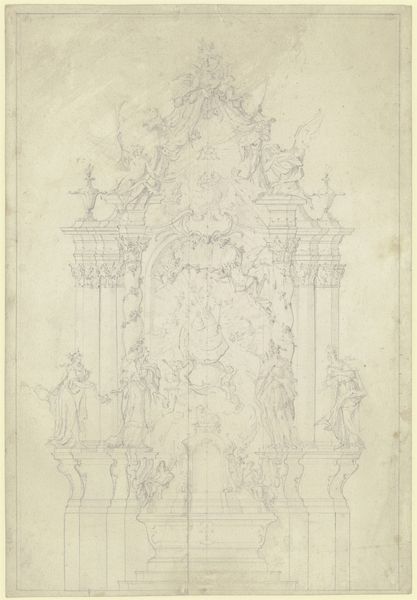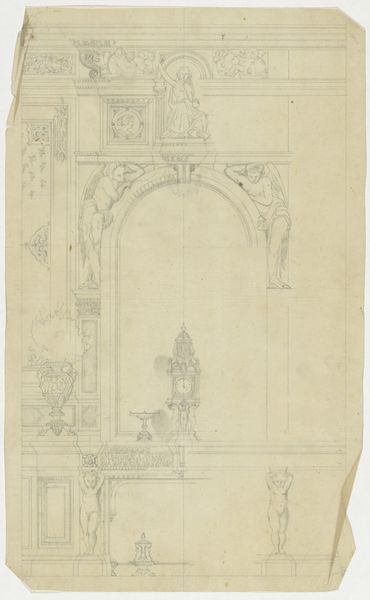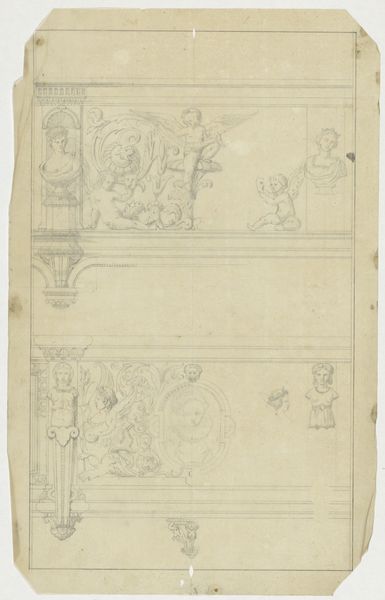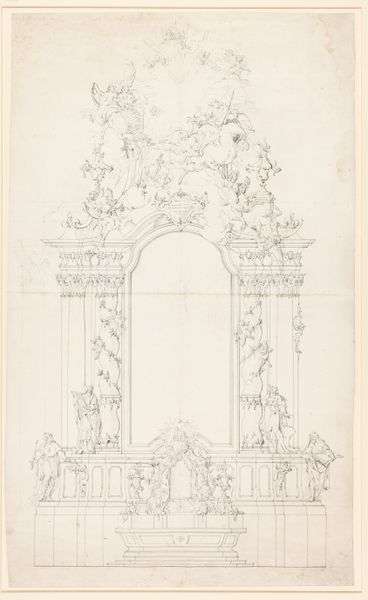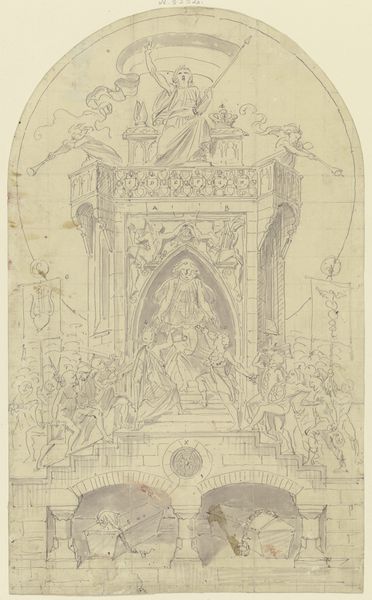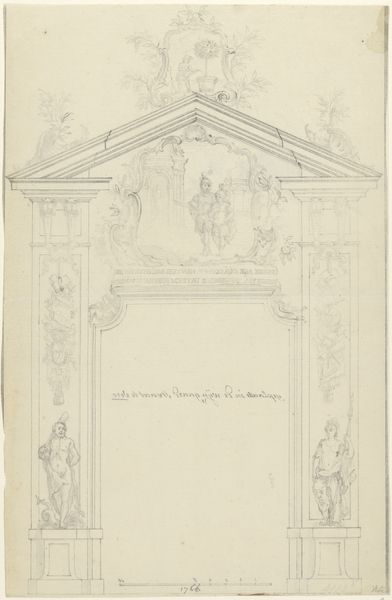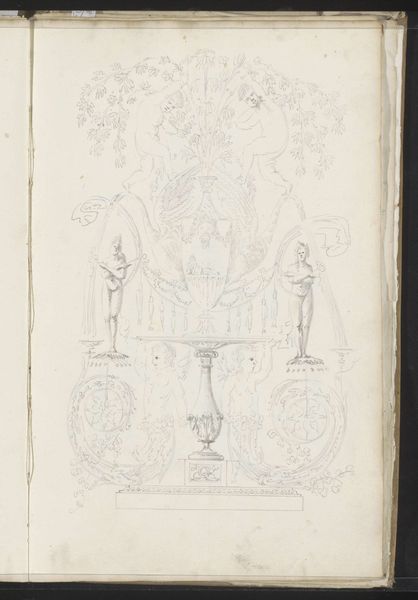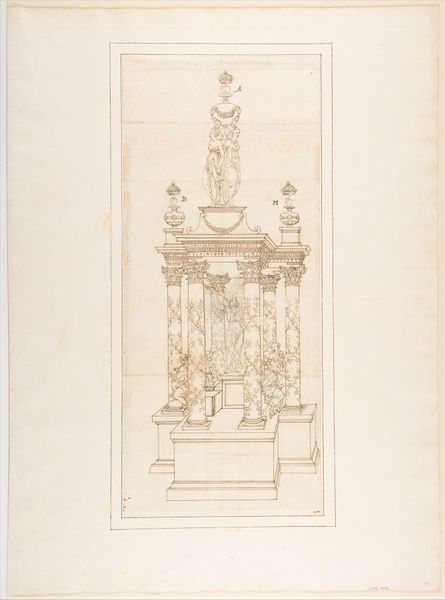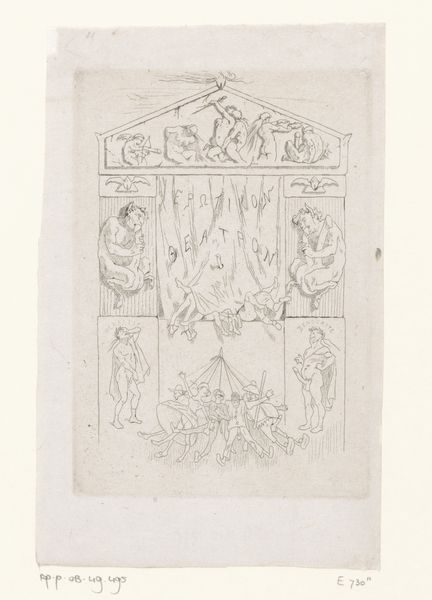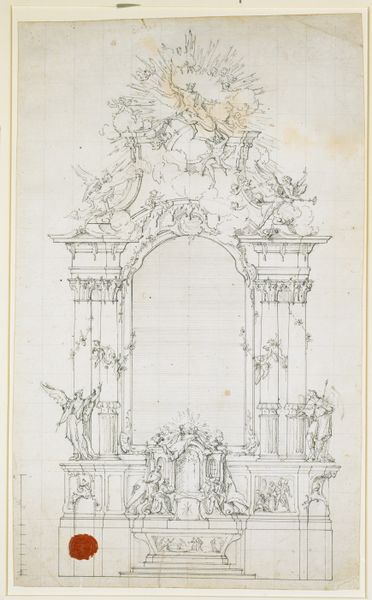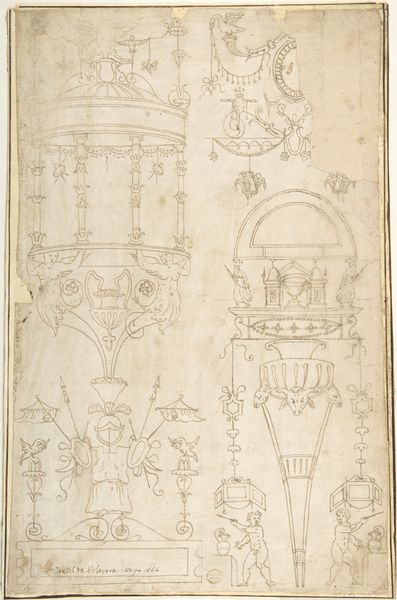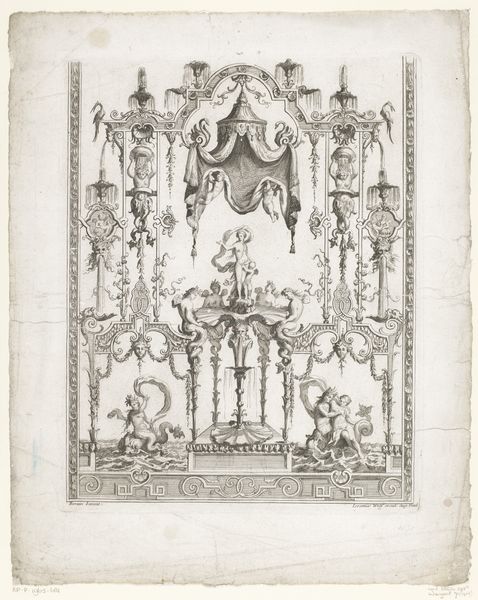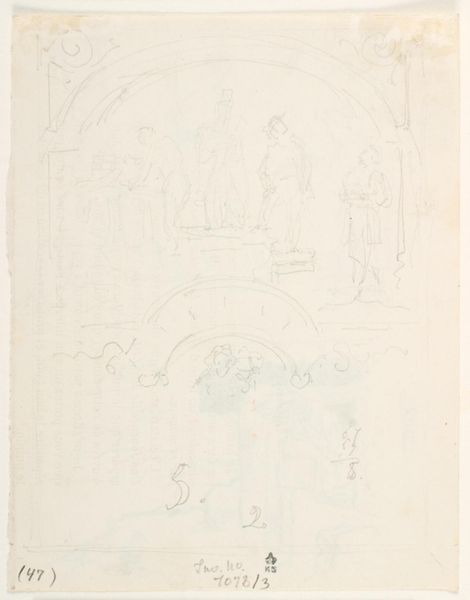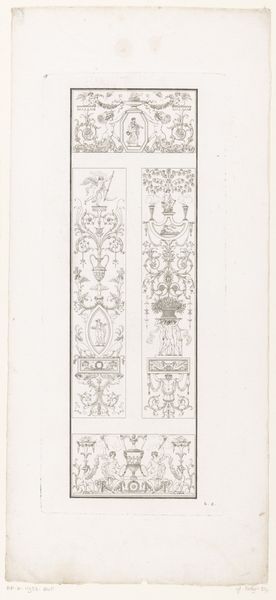
drawing, lithograph, print, pencil
#
drawing
#
narrative-art
#
lithograph
# print
#
figuration
#
pencil
#
genre-painting
Dimensions: height 330 mm, width 260 mm
Copyright: Rijks Museum: Open Domain
Curator: This delicate drawing is titled "Print seller in a Frame" by August Ferdinand Hopfgarten, dating back to somewhere between 1817 and 1896. It seems to be executed in pencil and lithograph. Editor: It gives me the impression of something fleeting, almost like a dream captured hastily on paper. There’s a sense of vulnerability to the figures due to the preliminary state of the artwork. Curator: It offers a fascinating glimpse into 19th-century commerce and society. The print seller, surrounded by what appears to be a family and some other possible customers, is positioned within an ornate architectural frame. What social dynamics might have been at play during the selling of printed images at the time? Were printed images a privilege or a means of disseminating knowledge widely? Editor: Given the sketched medium, I wonder about the materiality of the lithograph itself. Was it widely available at this time, cheap to produce and thus readily available to many people? Or did the lithograph material present certain constraints to the artist's process that shaped its eventual design? It seems there’s a fascinating tension between the potentially widespread medium of print and the relative intimacy of drawing. Curator: I agree. There's also the performative aspect—how did print sellers shape the public's engagement with visual culture, and what roles did gender and class play within such market interactions? Did having children humanize and create a sense of familial trust around these print sellers, encouraging others to approach? Editor: The method and cost to reproduce these images would also likely determine their consumption. Considering the labour involved in producing these printed images, who exactly had access to this artwork? Where in the market was this vendor located and how accessible would their goods have been to all people of this time? Curator: These are vital questions that prompt us to analyze how social capital, economics, and artistic labor are woven into these drawings of 19th century print markets. Editor: Absolutely. Reflecting on this piece reminds us that artworks such as Hopfgarten's don’t just depict reality, they're produced through a complex interplay of materials, labor and society.
Comments
No comments
Be the first to comment and join the conversation on the ultimate creative platform.
